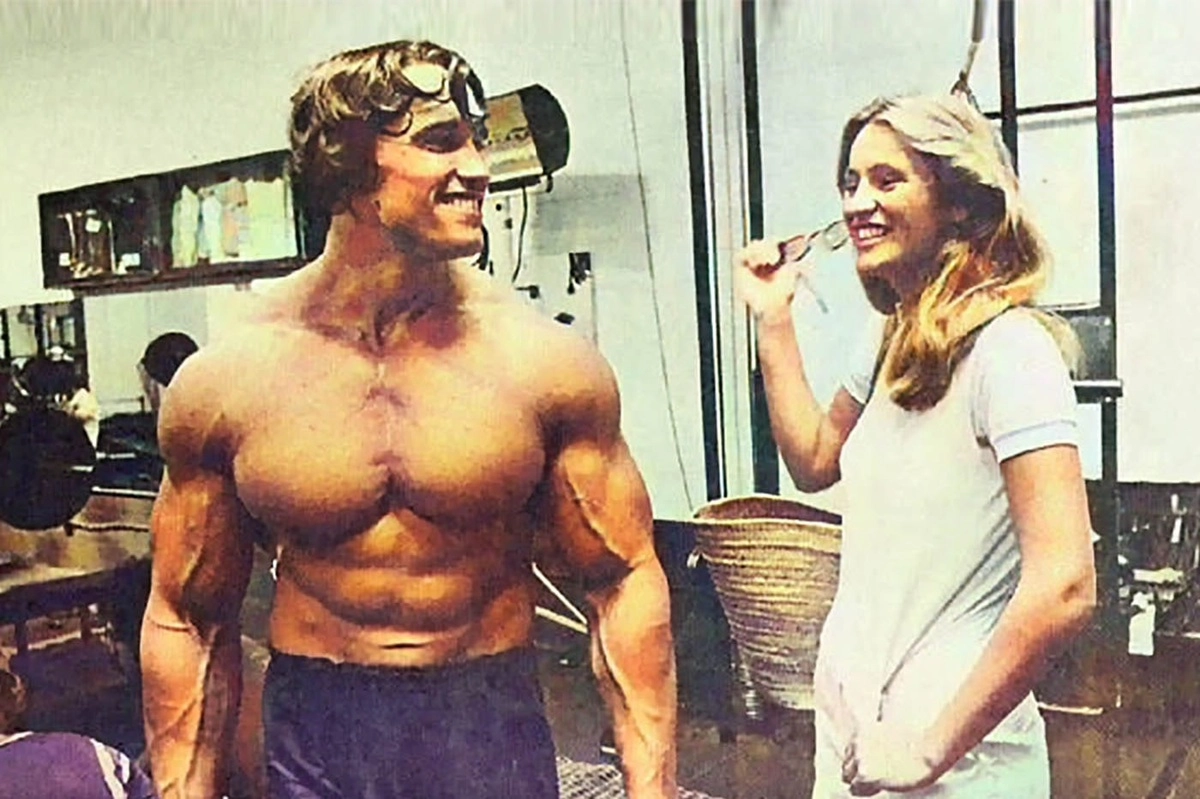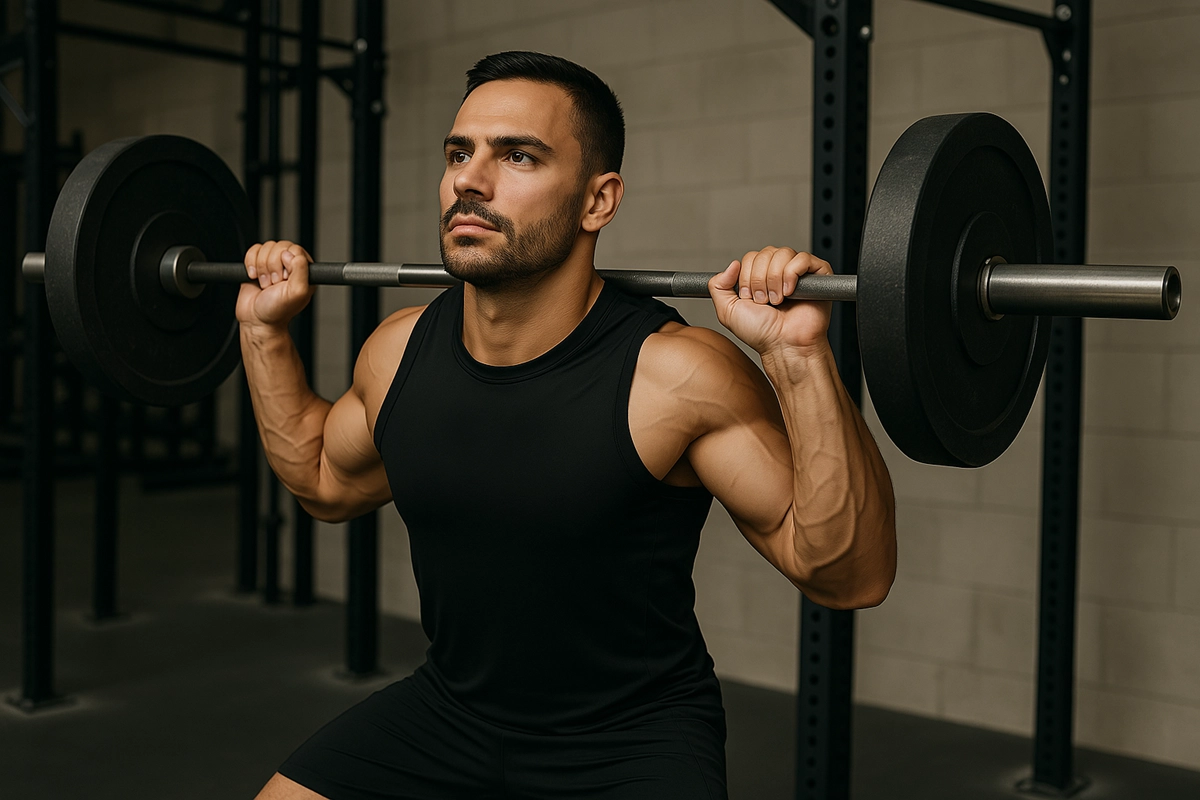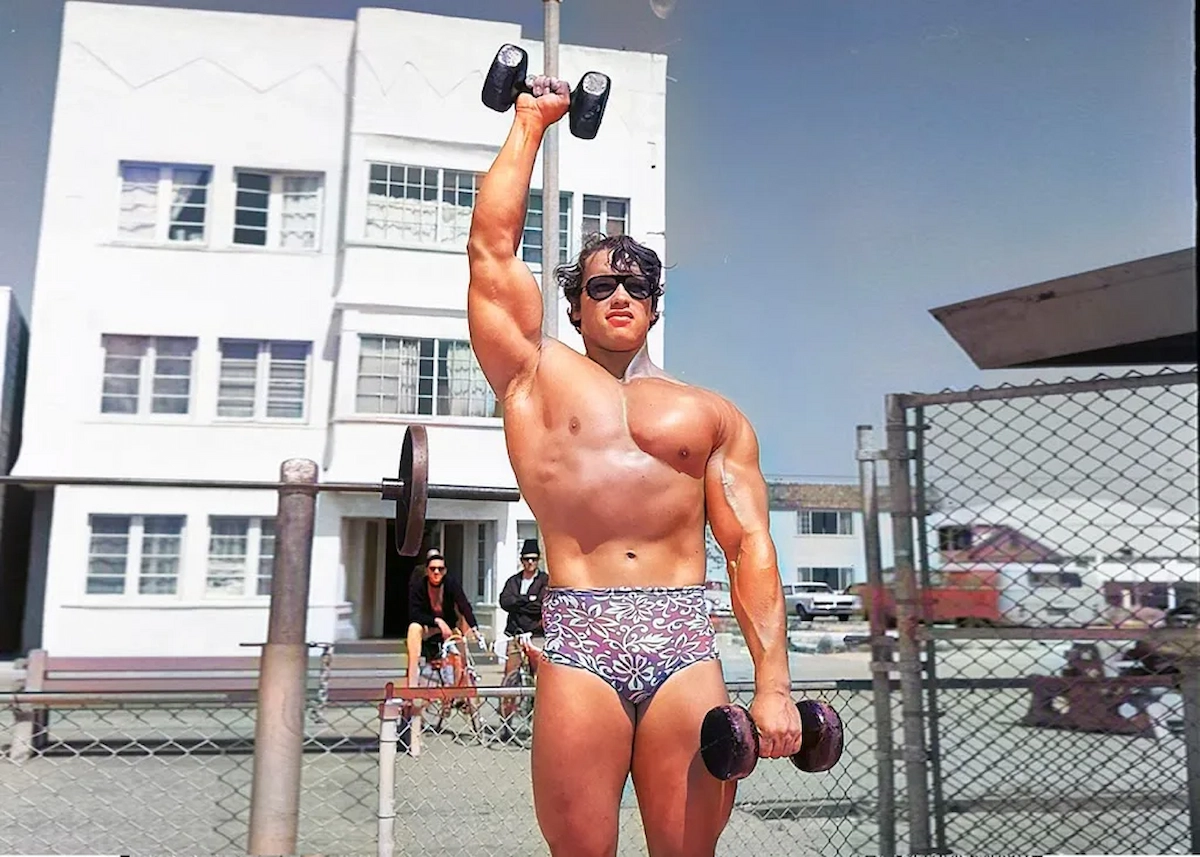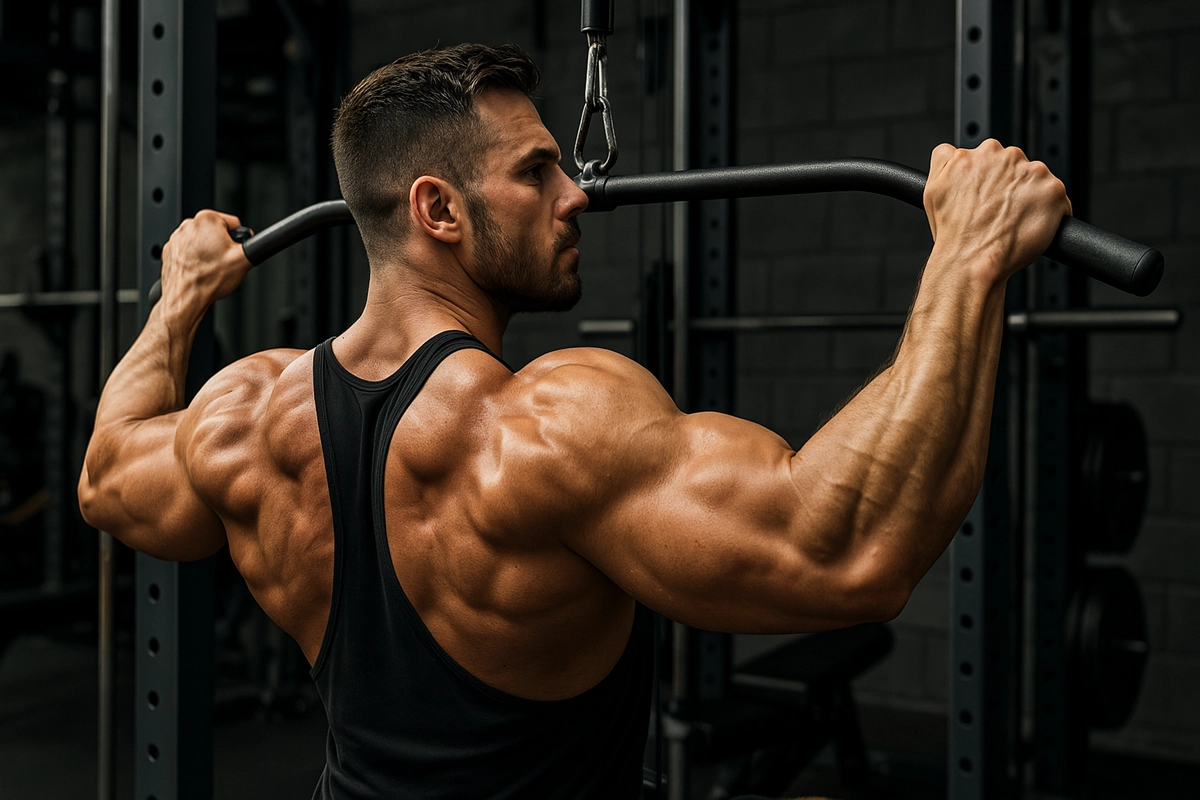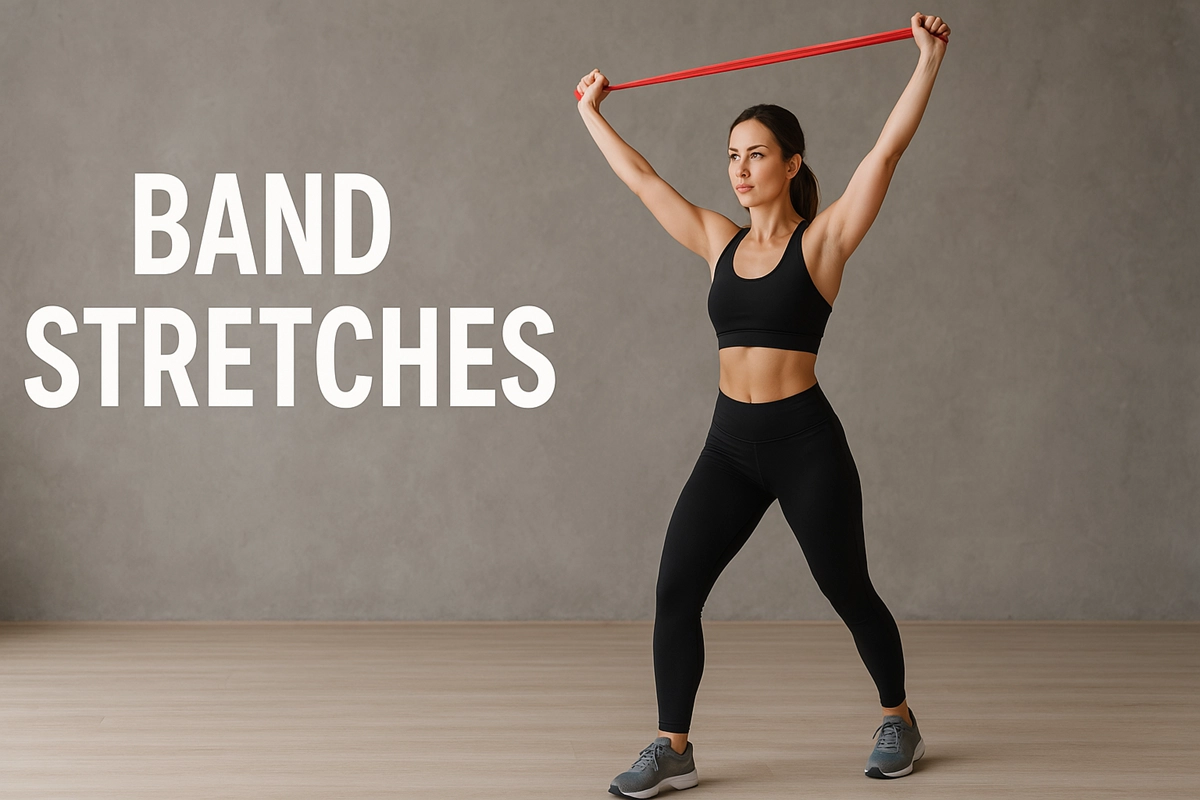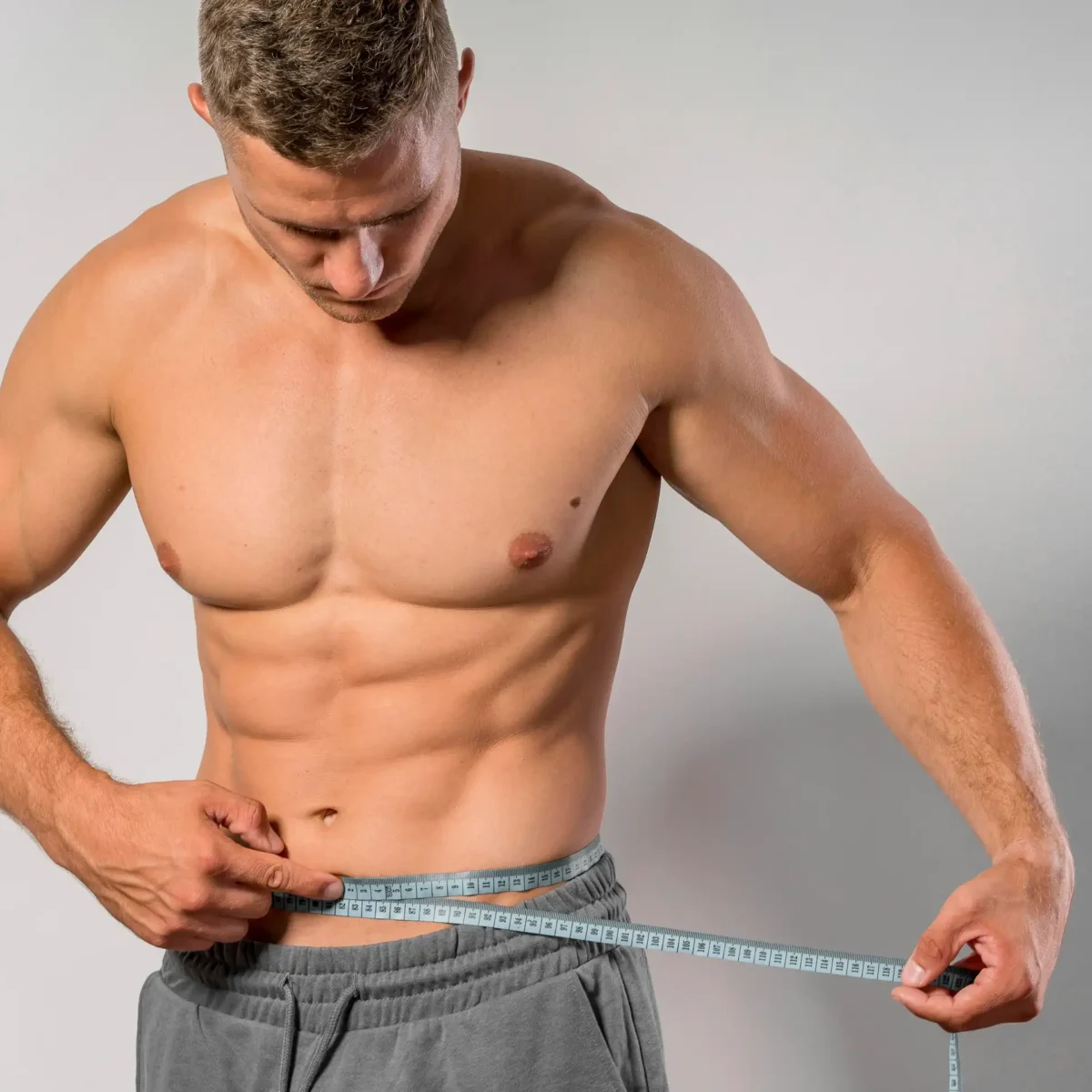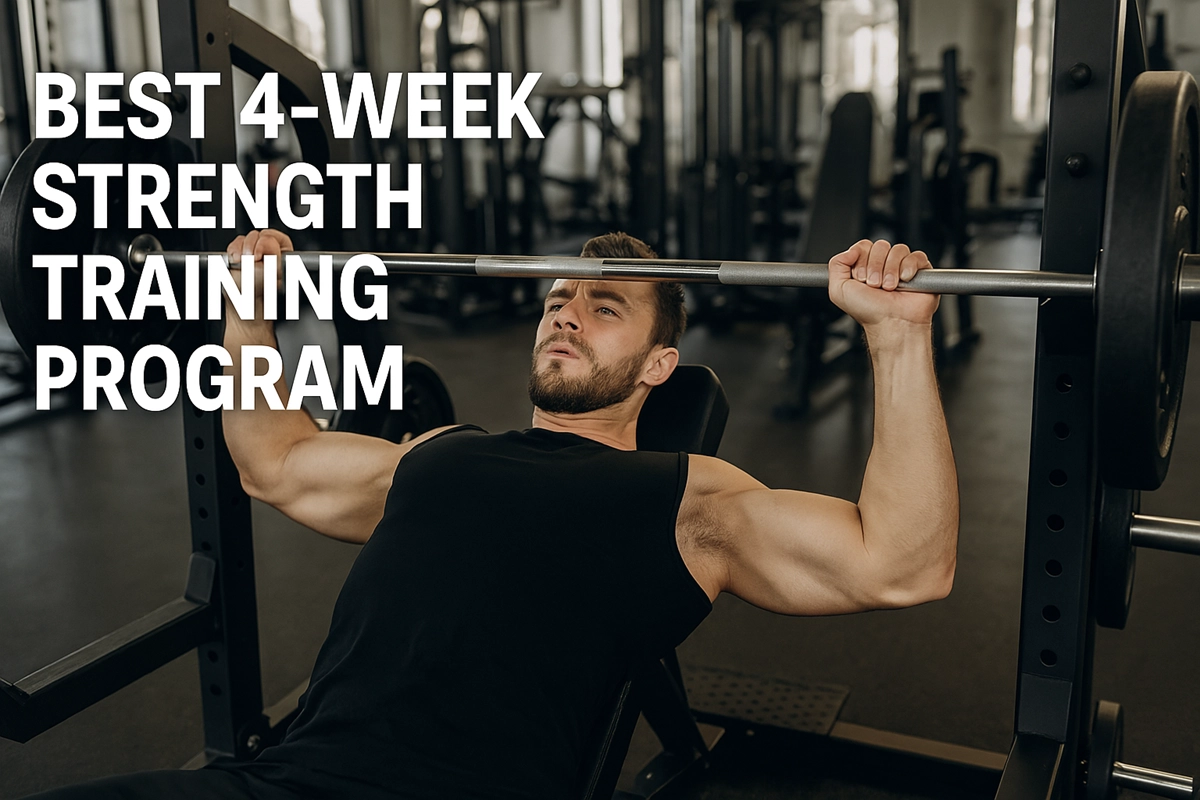You might be surprised to learn that Arnold Schwarzenegger’s iconic shoulder workout wasn’t just about heavy lifting – it began with a precise warm-up sequence that many bodybuilders overlook.
His signature approach combined old-school barbell movements with innovative dumbbell techniques, creating a blueprint for developing what he called “cannonball deltoids.”
If you’re ready to transform your shoulders using Oak’s time-tested methods, these exercises and specialized techniques will show you exactly how he built his legendary physique.
Introduction To Arnold’s Shoulder Training
Arnold Schwarzenegger is a legend in the bodybuilding world. His shoulder training routines are iconic, and many people follow his methods to achieve strong, defined shoulders.
#The Importance Of Shoulder Workouts
Shoulder workouts are crucial for upper-body strength. They help improve posture and prevent injuries, and strong shoulders also enhance the overall physique.
Shoulders play a key role in many daily activities. From lifting objects to pushing and pulling movements, strong shoulders make these tasks easier.
Here are some benefits of shoulder workouts:
- Improved posture: Strong shoulders help you stand tall and confident.
- Injury prevention: Well-trained shoulders reduce the risk of strains and sprains.
- Aesthetic appeal: Defined shoulders give you a balanced and attractive look.
#Arnold’s Philosophy On Training
Arnold believed in training with intensity and purpose. He emphasized the mind-muscle connection. This means focusing on the muscle you are working on.
He also stressed the importance of variety in workouts. Using different exercises and techniques keeps the muscles challenged and growing.
Arnold’s shoulder workouts often included:
- Heavy lifting: Using heavy weights to build strength and size.
- High volume: Performing many sets and reps to fatigue the muscles thoroughly.
- Isolation exercises: Targeting specific parts of the shoulder for balanced development.
Below is a table showing a sample shoulder workout inspired by Arnold:
| Exercise | Sets | Reps |
| Overhead Press | 4 | 8-10 |
| Lateral Raises | 3 | 12-15 |
| Front Raises | 3 | 12-15 |
| Rear Delt Flyes | 3 | 12-15 |
Anatomy Of The Shoulder Muscles
The shoulder is a complex joint that requires a deep understanding for practical training. This guide focuses on the key muscles involved in shoulder movements. Knowing these muscles helps you target them better during workouts.
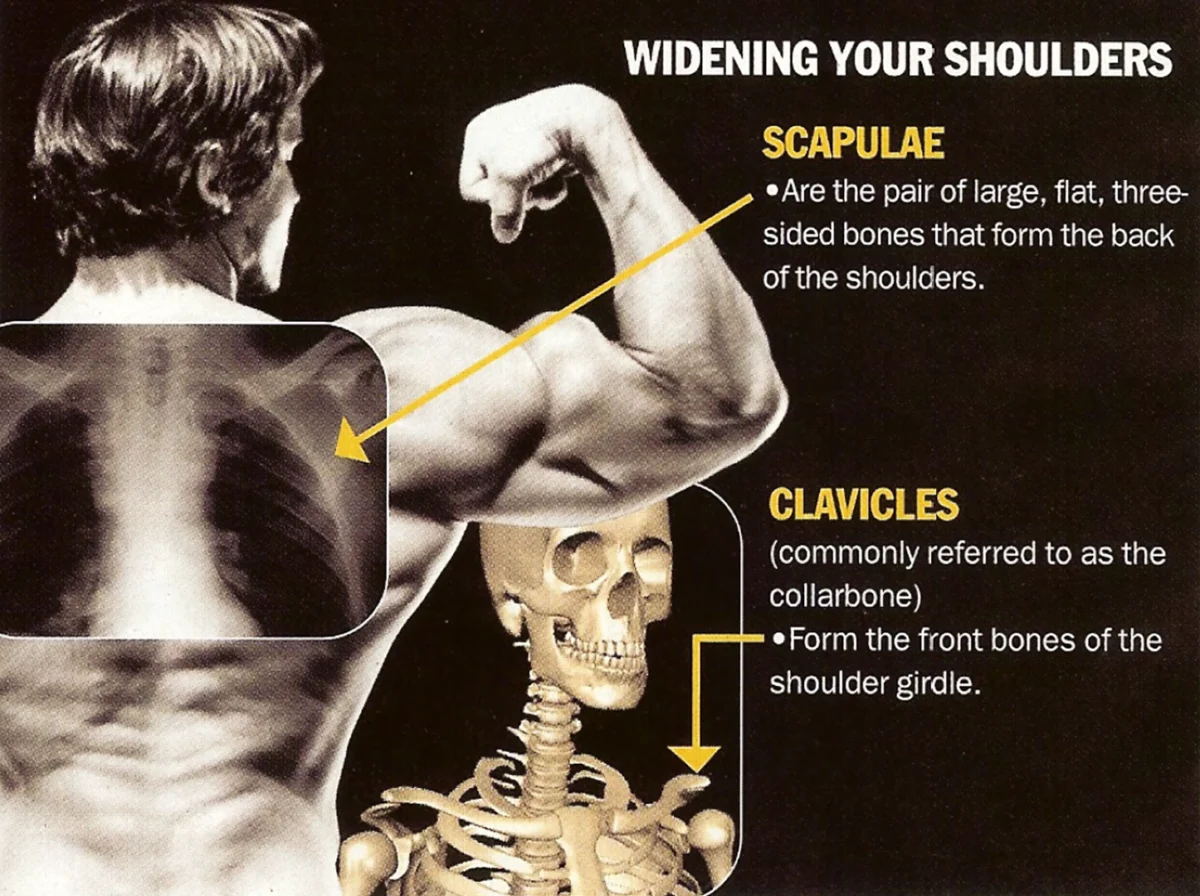
1. Deltoid Muscle Breakdown
The deltoid muscle is the primary muscle of the shoulder. It has three distinct parts:
- Anterior Deltoid: Located at the front. It helps lift your arm forward.
- Medial Deltoid: Found in the middle. It raises your arm to the side.
- Posterior Deltoid: Positioned at the back. It moves your arm backward.
Each part of the deltoid muscle has a unique function. Understanding these parts helps you plan better workouts, and targeting each section ensures balanced muscle growth.
2. Supporting Musculature And Functions
Several muscles support the shoulder joint. These muscles provide stability and additional movement. Here are the key supporting muscles:
| Muscle | Function |
| Rotator Cuff | Stabilizes the shoulder joint. It consists of four muscles: supraspinatus, infraspinatus, teres minor, and subscapularis. |
| Trapezius | Supports shoulder elevation. It also helps in retracting the shoulder blades. |
| Rhomboids | Retracts the shoulder blades. It provides stability to the upper back. |
| Serratus Anterior | Helps in moving the shoulder blade forward. It is crucial for overhead lifts. |
Each muscle has a unique role. Understanding their functions helps create a balanced shoulder workout. Focus on each muscle to prevent injuries and improve strength.
Arnold’s Shoulder Workout
While many bodybuilders combine shoulder training with other muscle groups, Arnold Schwarzenegger’s approach during his 1975 Mr. Olympia prep prioritized dedicated shoulder sessions.
You’ll start with a barbell clean and press for 30 reps, warming up the entire shoulder complex. Next, you’ll perform an Arnold press for 5 sets of 6 reps, superseded with bent-over lateral raises to hit the rear delt.
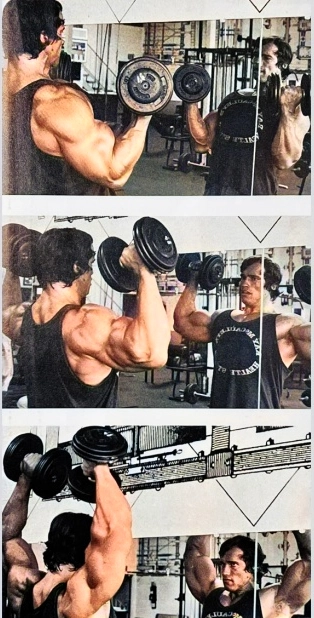
The routine continues with lying lateral raises and cable lateral raises, each for 5 sets of 12 reps, developing roundness and width. Finally, you’ll tackle alternate dumbbell front raises for 3 sets of 12.
This shoulder routine reflects Arnold’s philosophy of intensity and isolation—he’d train legs at 10 a.m., then return at 6 p.m. specifically for shoulders, ensuring maximum focus on his fitness goals.
Exercise Descriptions
You’ll master Arnold’s favorite shoulder exercises through a mix of classic and innovative movements that helped build his legendary deltoids.
These five exercises formed the cornerstone of Arnold’s approach to developing massive, well-defined shoulders during his competitive bodybuilding career.
Starting with the explosive Barbell Clean and Press and moving through to the targeted Cable Lateral Raise, you’ll learn the precise techniques that Arnold used to sculpt his iconic physique.
1. Barbell Clean and Press
The barbell clean and press became a cornerstone of Arnold’s early strength development during his powerlifting days in Austria.
This powerful mass-building movement later served as his warm-up exercise, demonstrating its versatility as both a strength builder and primer.
To perform this balanced growth exercise:
- Stand facing the barbell with feet shoulder-width apart
- Grip the bar slightly wider than your shoulders using proper form for safety
- Explosively pull the barbell from the floor to shoulder height
- Rotate elbows under the bar to reach the overhead press position
- Drive the weight overhead with controlled power
- Return to the starting position with a controlled descent
This total-body barbell movement builds exceptional shoulder strength while engaging multiple muscle groups, making it an efficient compound exercise for serious lifters.
2. Arnold Press
Named after bodybuilding legend Arnold Schwarzenegger himself, this innovative shoulder exercise revolutionized deltoid training by combining rotational movement with overhead pressing.
It’s the only exercise officially bearing Arnie’s name, reflecting his belief in its superior effectiveness for building massive delts.
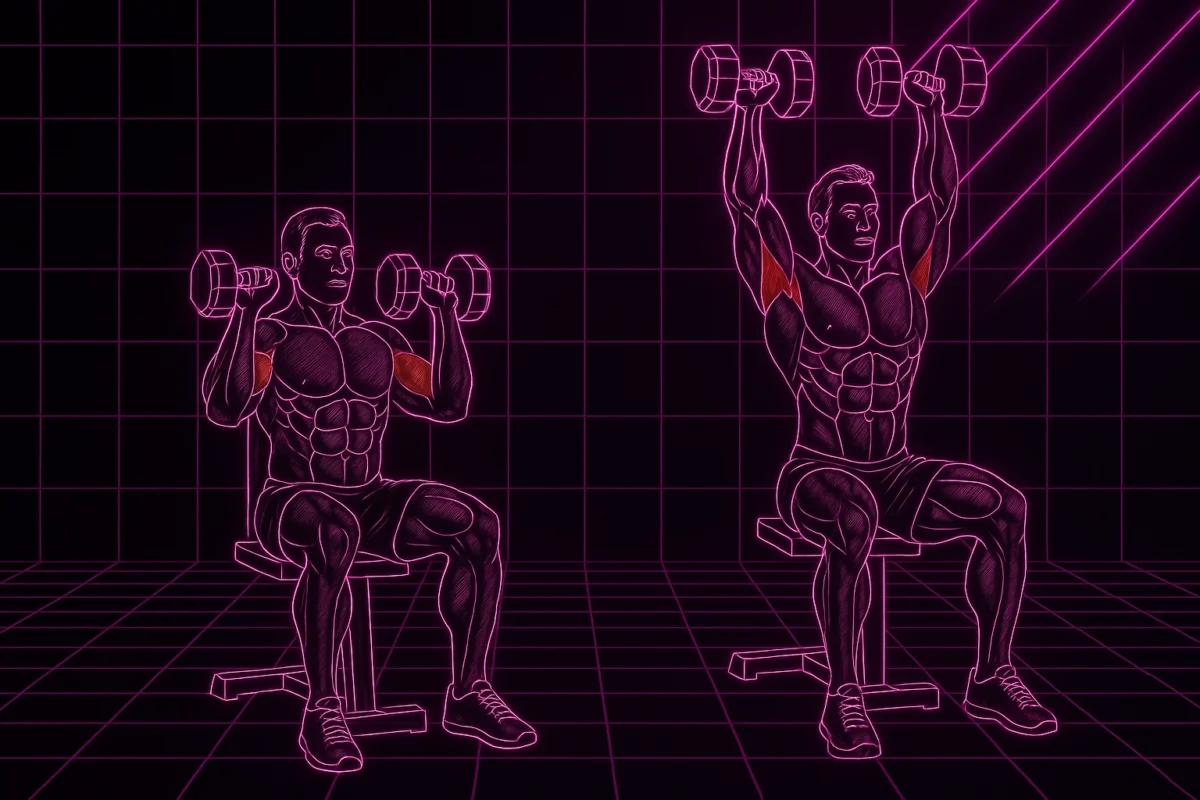
To perform the Arnold press with proper form:
- Start with dumbbells at shoulder level, palms facing your body
- Press upward while rotating your wrists gradually outward
- Stop just before the lockout to maintain tension
- Lower the weights while rotating palms back inward
This unique movement targets multiple deltoid heads through an increased range of motion.
As you progress, you’ll be able to handle higher weights while maintaining the signature rotational pattern that made this exercise Arnold’s go-to shoulder builder.
3. Bent-over Lateral Raise
Building powerful rear deltoids requires mastering the bent-over lateral raise, a precision movement that Arnold considered essential for complete shoulder development.
This exercise targets your posterior deltoids explicitly while engaging your upper traps and medial deltoid muscles for stabilization.
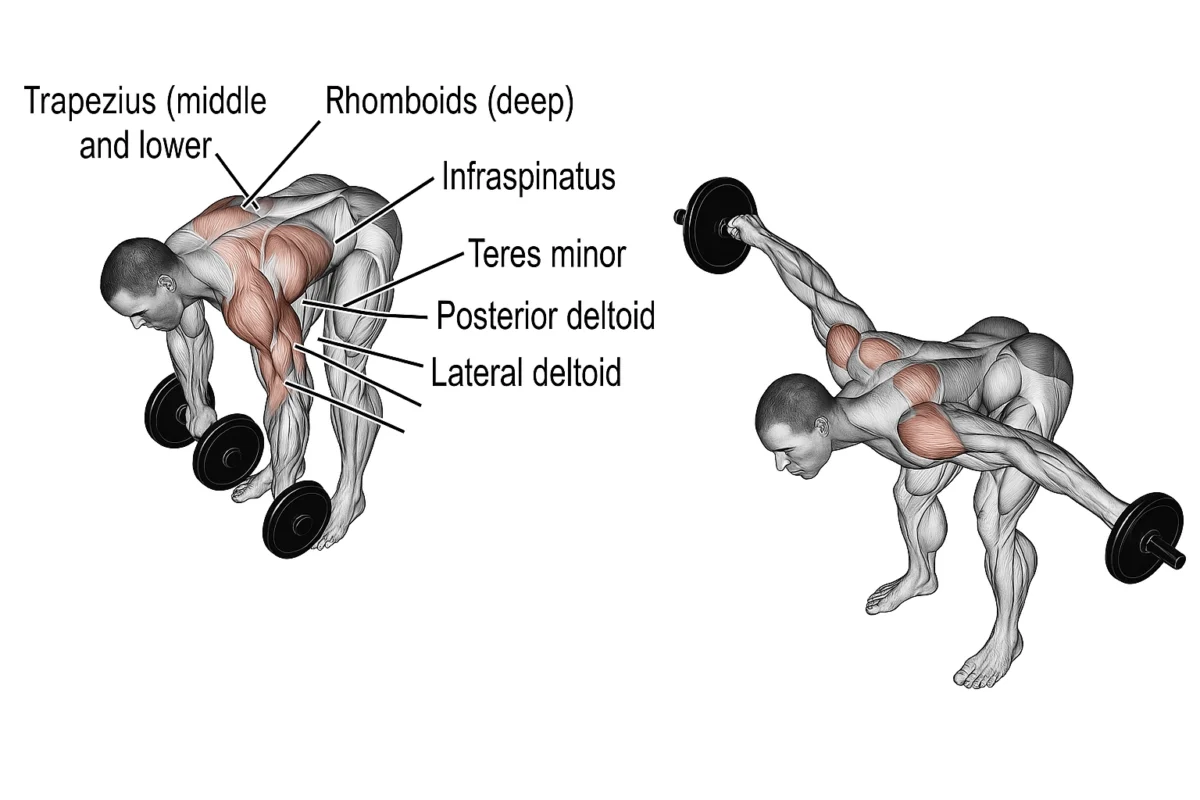
To perform this classic shoulder routine staple:
- Stand with feet shoulder-width apart, holding dumbbells
- Hinge forward at your hips to a 45-degree angle
- Keep your arms slightly bent, locked throughout the movement
- Raise dumbbells to shoulder height with a controlled motion
- Rotate your wrists during the lift, thumbs pointing downward at the top
The bent-over lateral raise works best when paired with the Arnold Press, creating the perfect combination for developing all three heads of the shoulder muscles and promoting balanced muscle growth.
4. Lying Lateral Raise
The lying lateral raise, an exercise championed by Arnold and Franco Columbu for its strict form requirements, reaches new levels of precision in isolating your side deltoids.
This classic shoulder blaster removes momentum and body English from the equation, forcing your medial delts to do all the work.
Here’s how to perform this boulder shoulder builder:
- Set a decline bench to 30 degrees and lie sideways with a dumbbell in your upper hand
- Keep your arm slightly bent, maintaining this angle throughout
- Lower the weight in front of your body
- Pivot at your shoulder joint, raising the dumbbell until it’s perpendicular to your torso
- Control the descent and repeat
The lying lateral raise’s strict form guarantees every rep counts toward developing those coveted 3D shoulders Arnold was famous for.
5. Cable Lateral Raise
Another dimension of shoulder development unfolds with the cable lateral raise, a precision movement that Arnold mastered for building his signature 3D deltoids. This exercise maximizes medial delt stimulation while reducing common shoulder injuries through controlled tension.
To perform this exercise:
- Position yourself side-on to a low cable pulley
- Grasp the handle with your outside arm
- Keep your arm straight but not locked
- Raise the cable out to shoulder height
- Lower with controlled resistance
You’ll notice the constant tension that cables provide compared to traditional side lateral movements, which makes them particularly effective for broader shoulders.
Arnold included this variation because it targets the muscle-building benefits of continuous delt stimulation. The cable lateral guarantees your medial delts stay engaged throughout the entire range of motion, enhancing your shoulder development.
6. Alternate Dumbbell Front Raise
Power surges through the anterior deltoids with the alternate dumbbell front raise, a movement Arnold used to sculpt his signature rounded shoulders. This exercise targets your front deltoid, building the mass you’ll see when admiring your shoulders in the mirror.
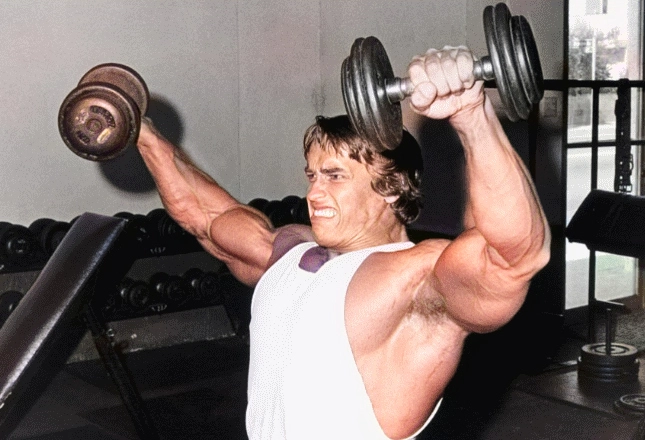
To perform this shoulder workout staple, stand with your feet shoulder-width apart, holding a pair of dumbbells at your sides. Your palms should face your thighs.
Start with your right arm, raising it straight in front of you until it’s parallel with the ground. Lower it with control, then repeat on your left side. The key is maintaining strict form throughout the movement – don’t swing or use momentum.
You’ll feel the burn as you alternate sides, building those massive shoulders one front raise at a time.
Advanced Training Techniques
Arnold Schwarzenegger’s shoulder training is legendary. Advanced techniques can elevate your workout. These methods push your muscles to new limits.
#Supersets And Dropsets
Supersets involve performing two exercises back-to-back, with no rest between them, which maximizes muscle fatigue and growth.
Here is an example superset for shoulders:
- Overhead Press: 10 reps
- Lateral Raises: 12 reps
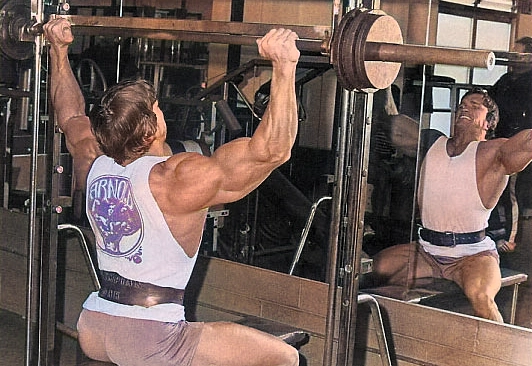
Dropsets take a different approach. Start with a heavy weight and perform as many reps as possible. Then, reduce the weight and continue the set. This burns out the muscle completely.
An example dropset might look like this:
- Overhead Press: 8 reps at 70 lbs
- Drop to 50 lbs: 8 reps
- Drop to 30 lbs: 8 reps
#Pyramid Training
Pyramid Training changes the weight and reps in a structured manner. Start with lighter weights and higher reps. Gradually increase the weight while lowering the reps.
Here is a pyramid set example:
| Set | Weight | Reps |
| Set 1 | 30 lbs | 12 reps |
| Set 2 | 40 lbs | 10 reps |
| Set 3 | 50 lbs | 8 reps |
| Set 4 | 60 lbs | 6 reps |
Pyramid training ensures progressive overload, a key principle in muscle growth. Each set pushes your shoulders further.
These advanced techniques, supersets, drop sets, and pyramid training, are essential. They help maximize shoulder gains.
Arnold Schwarzenegger’s Shoulder Training Tips
If you want massive shoulders like Arnold’s, you’ll need to follow his hard-earned wisdom about deltoid development.
Arnold’s journey from mediocre to magnificent shoulders taught him that certain training principles make all the difference in sculpting three-dimensional delts.
Let’s examine five key tips from the Austrian Oak that will help you build boulder shoulders, including his insights on exercise selection, training frequency, and intensity techniques.
Tip #1: Keep Barbell Training to a Minimum
While barbells remain a popular choice for shoulder training, Arnold Schwarzenegger understood the wisdom of limiting their use in his deltoid workouts.
Barbell shoulder exercises during chest training stimulate the front delts, so there’s no need to overdo it.
Instead of relying heavily on the overhand grip of barbell movements, follow Arnold’s lead by incorporating more dumbbell presses and cable work into your shoulder muscle group training.
This approach allows for a better range of motion and natural movement patterns.
On your fitness journey toward an ideal physique, remember that Arnold’s preference for dumbbells wasn’t random – he recognized their superiority in developing well-rounded deltoids.
The freedom to rotate your wrists during exercises like the Arnold Press can lead to better muscle engagement and more complete shoulder development.
Tip #2: Don’t Work Your Shoulders With Your Chest
Despite the common practice of combining chest and shoulder workouts, Arnold recognized this as a vital training mistake. The reasoning behind his legendary physique was simple: heavy weights used during chest workouts, particularly in bench pressing movements, pre-exhaust your front delts before you can properly target them.
To maximize your shoulder development, you’ll want to train this muscle group either on its own or after training your arms. This way, when you perform deltoid flyes and other shoulder-specific movements, you can use max weights without your front delts being fatigued.

Arnold’s approach guarantees that you hit your shoulders when they’re fresh and capable of handling heavy weights. This small but essential adjustment in your training split can lead to considerably better shoulder development.
Tip #3: Don’t Neglect the Traps
Ever notice how Arnold’s physique showcased those impressive mountain-like traps rising from his shoulders? The trapezius muscle was vital to his award-winning physique, and he knew it couldn’t be overlooked when building the complete shoulder muscle group.
You’ll want to follow Arnold’s approach by training your traps separately from your delt routine, but on the same day.
Focus on exercises that target both the upper and middle traps for complete development. Here’s how to do it:
- Perform shrugs to build those eye-catching upper traps that extend from the neck to the shoulder
- Include cable pull-ins to develop the middle fibers around your shoulder blade
- Train traps immediately after completing your shoulder workout
- Maintain a balance between trap development and shoulder width
Remember: Neglecting your traps means missing out on that powerful, three-dimensional look Arnold was famous for.
Tip #4: Go Light and Strict for Rear Delts
A common mistake in rear deltoid training is going too heavy with the weights, but Arnold knew better.
When performing rear deltoid flyes, lighter weights with strict form will deliver superior results compared to heavier weights with poor technique.
The rear delts are small muscles that don’t require much resistance to achieve ideal delt stimulation.
You’ll want to focus on high reps in the 12-15 rep range, which allows you to maintain perfect form throughout each set.
If you load up too much weight, larger surrounding muscles will take over the movement, reducing the exercise’s effectiveness.
Remember Arnold’s approach: concentrate on feeling the rear deltoids working through a complete range of motion rather than trying to impress anyone with heavy weights.
Tip #5: Make Use of Drop Sets
Drop sets were one of Arnold’s favorite intensity techniques for building massive shoulders, particularly when targeting the front deltoids.
When hitting his front shoulders, he positioned himself in front of the dumbbell rack with heavy weights, ready for high-volume work.
Here’s Arnold’s drop set method for boulder shoulders:
- Start with dumbbells you can lift for 8 reps
- Immediately grab the following lighter weights
- Continue performing 8 reps per mini-set
- Work your way down the rack
- Complete 5-6 drops without rest
The key is maintaining form while pushing through the burn.
You’ll feel your shoulders screaming, but that’s precisely what Arnold was after.
This technique combines heavy weights with volume to stimulate maximum muscle growth.
Tip #6: Incorporate Isometric Laterals
While many bodybuilders focus solely on dynamic movements, Arnold understood the power of isometric holds for developing broader, more defined shoulders.
After completing his regular lateral raises, he grabbed heavier dumbbells and lifted them to the sides as high as possible, maintaining an intense isometric contraction until failure.
To incorporate this technique into your shoulder workout, perform your standard lateral raise sets first.
Then, select dumbbells that are 5-10 pounds heavier than your working weight.
Raise them to shoulder height and hold that position, focusing on maximum tension in your side delts.
This brutal finishing move triggers continuous muscle growth through extended time under tension.
You’ll know you’re doing it right when you feel an intense burn throughout the shoulder muscle group, just like Arnold did.
Tip #7: Superset Press with Raises
Supersets formed the backbone of Arnold’s legendary shoulder development, combining pressing movements with isolation exercises to maximize muscle fatigue and growth.
This intense technique pairs the Arnold Press with dumbbell lateral raises for a complete assault on your shoulder muscles.
To build boulder shoulders like the Austrian Oak, perform five supersets of:
- Arnold Press (pressing movement)
- Immediately followed by dumbbell lateral raises
- Optional: Add upright rows to create a tri-set
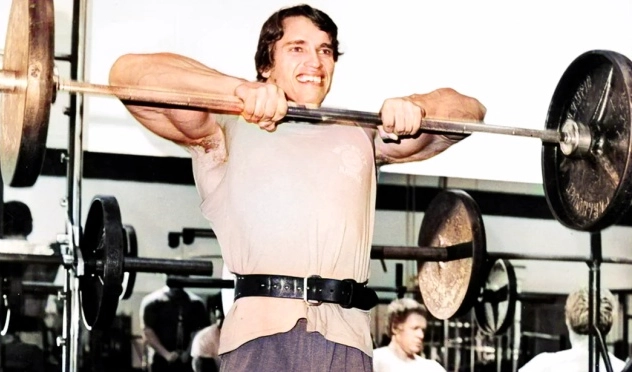
This combination of intensity techniques targets the entire shoulder muscle group, particularly emphasizing the middle and front deltoids.
Recovery And Nutrition For Shoulder Growth
Achieving massive shoulder gains like Arnold Schwarzenegger involves more than just intense workouts. Proper recovery and nutrition are crucial for muscle growth and overall shoulder health. This section will detail how to optimize post-workout recovery and diet to maximize your shoulder training results.
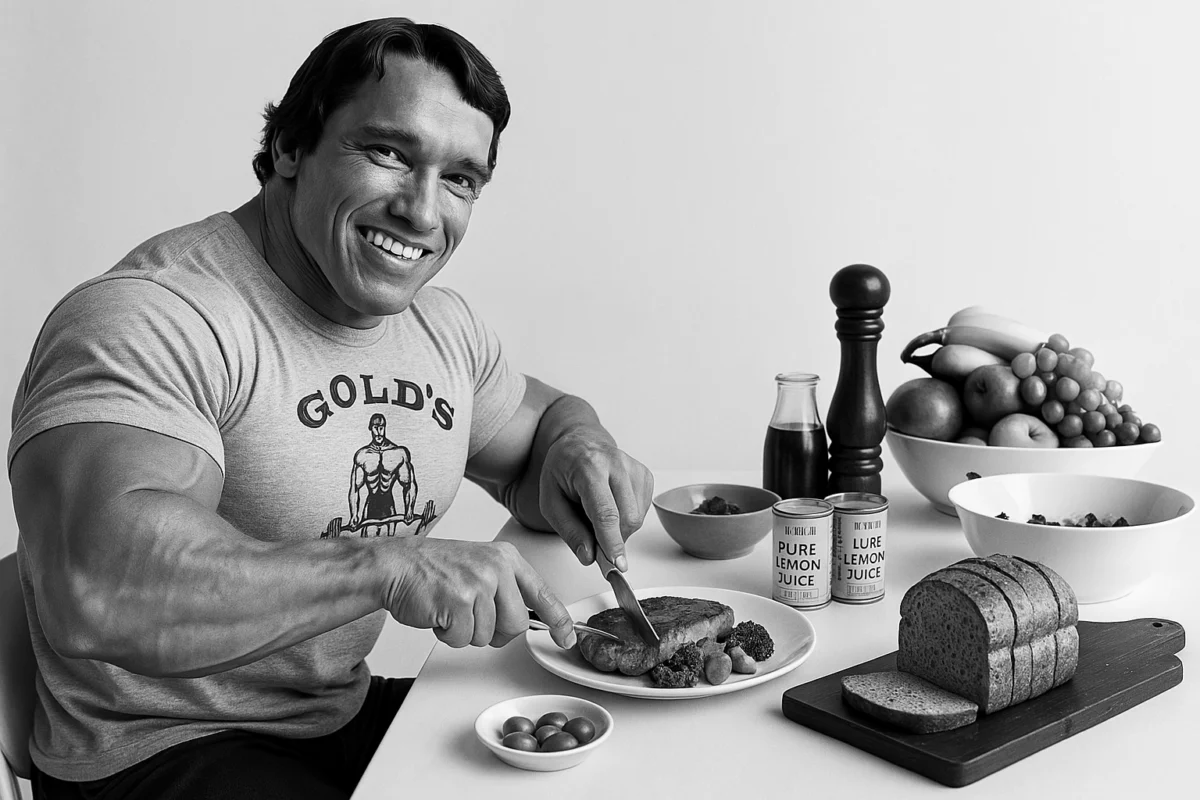
1. Post-workout Recovery
After a grueling shoulder workout, your muscles need time to repair and grow. Rest is essential for muscle recovery. Aim for at least 7-8 hours of sleep each night. Quality sleep helps your body produce growth hormones.
Stretching and foam rolling can alleviate muscle tightness. These activities improve blood flow to your shoulders, speeding up recovery. Incorporate a cool-down routine with light stretching exercises after every workout session.
Hydration plays a key role in recovery. Drink plenty of water throughout the day to keep your muscles hydrated. Proper hydration helps transport nutrients and remove waste.
2. Diet And Supplements
Your diet significantly impacts your shoulder growth. Consuming the proper nutrients helps your muscles repair and build stronger fibers. Include protein-rich foods like chicken, fish, and legumes in your diet. Aim for at least 1 gram of protein per pound of body weight daily.
Healthy fats are also essential. They provide the energy needed for intense workouts. Include sources like avocados, nuts, and olive oil in your meals. Carbohydrates fuel your workouts and aid in recovery. Opt for complex carbs like whole grains, fruits, and vegetables.
Supplements can enhance your nutrition. Consider taking whey protein after workouts to deliver amino acids to your muscles quickly. Creatine is another effective supplement that boosts muscle strength and recovery. Branched-chain amino acids (BCAAs) help reduce muscle soreness and speed up recovery.
| Nutrient | Sources | Benefits |
| Protein | Chicken, Fish, Legumes | Muscle Repair and Growth |
| Healthy Fats | Avocados, Nuts, Olive Oil | Energy for Workouts |
| Carbohydrates | Whole Grains, Fruits, Vegetables | Fuel and Recovery |
Programming Your Shoulder Workouts
To achieve those boulder shoulders like Arnold, you need a well-structured workout plan. Programming your shoulder workouts is crucial to targeting all three heads of the deltoid, which will help you build strength, size, and definition.
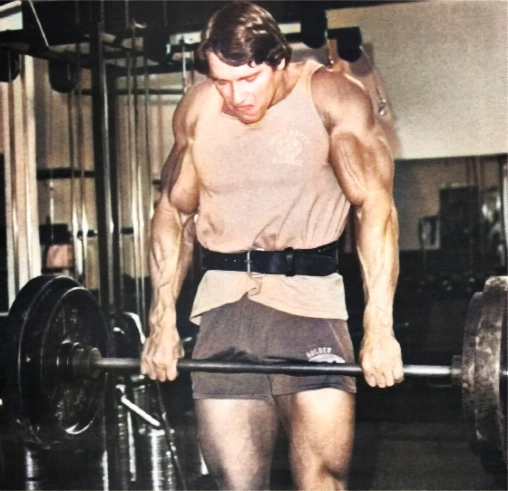
#Sample Shoulder Workout Routine
Here is a sample shoulder workout routine that you can follow:
| Exercise | Sets | Reps |
| Overhead Press | 4 | 8-10 |
| Lateral Raises | 3 | 12-15 |
| Front Raises | 3 | 12-15 |
| Bent-Over Rear Delt Flyes | 3 | 12-15 |
| Arnold Press | 3 | 8-10 |
Arnold’s Secret Exercise List Over the decades, he was able to reduce his list of the most efficient deltoid exercises down to nine.
- Rotating Arnold Press
- Standing Dumbbell Lateral Raises
- One-Arm Cable Side Laterals
- One Arm Lying Dumbbell Raises
- Seated behind the Neck Press
- Seated Dumbbell Press
- Seated Military Front Barbell, or Smith Machine Press
- Standing Alternate Dumbbell Raises
- Bent over Dumbbell Laterals
To build traps, he usually used one of the following exercises.
- High Pulls
- Upright Rows
- Shrugs
Overhead Press targets all three heads of the deltoid. Lateral Raises focus on the middle delt for width. Front Raises emphasize the front delt. Bent-Over Rear Delt Flyes hit the rear delt. Finally, the Arnold Press combines rotation and pressing for overall shoulder development.
#Incorporating Shoulders Into A Split
If you follow a split routine, you should know how to incorporate shoulder workouts. Here are some divided routine ideas:
- Push/Pull/Legs Split: Train shoulders on your push day with chest and triceps.
- Upper/Lower Split: Include shoulders on your upper body day with back, chest, and arms.
- Full Body Split: Add one or two shoulder exercises to your full-body workout day.
In a Push/Pull/Legs Split, your shoulder exercises can complement your chest and triceps exercises. In an Upper/Lower Split, you can pair your shoulder workouts with other upper-body exercises. For a full-body split, focus on compound movements that engage the shoulders.
Remember, rest and recovery are as important as the workout itself. Give your shoulders enough time to recover between sessions to avoid injury and maximize growth.
Common Mistakes To Avoid
Training shoulders like Arnold Schwarzenegger can be highly rewarding. However, many enthusiasts make common mistakes that hinder progress. To achieve the best results, avoid these pitfalls. Below are some key areas to focus on.
1. Overtraining And Injury Prevention
Overtraining can lead to serious injuries. Shoulder muscles need adequate rest to grow and recover, and overworking them can cause strains, tears, and joint issues.
Follow a balanced routine. Include rest days to allow muscles to heal. A good rule is to train your shoulders 2-3 times a week. This helps prevent overuse and maintain muscle health.
Incorporate warm-up exercises. Always start with a proper warm-up to increase blood flow to the muscles. Simple movements like arm circles or light weights can prepare your shoulders for intense workouts.
| Common Mistakes | Prevention Tips |
| Training daily | Rest 1-2 days between shoulder workouts |
| Skipping warm-ups | Perform 5-10 minute warm-up exercises |
2. Form And Technique Tips
Improper form can lead to injuries and ineffective workouts. Always maintain correct posture during shoulder exercises. This ensures the target muscles are engaged and reduces strain on joints.
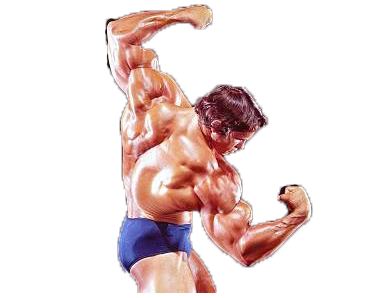
Use controlled movements. Avoid swinging or jerking the weights. Slow, controlled lifts enhance muscle activation and reduce injury risks.
Focus on the muscle-mind connection. Feel the shoulder muscles working during each rep. This helps maximize the effectiveness of each exercise.
- Keep your back straight
- .Avoid locking your elbows
- Lift with a smooth, steady motion
By following these guidelines, you can avoid common mistakes and achieve better results in your shoulder training routine.
Consistency And Dedication
Consistency is essential. Train your shoulders regularly. Aim for at least three workouts each week. Dedication means sticking to your routine. Don’t skip sessions.
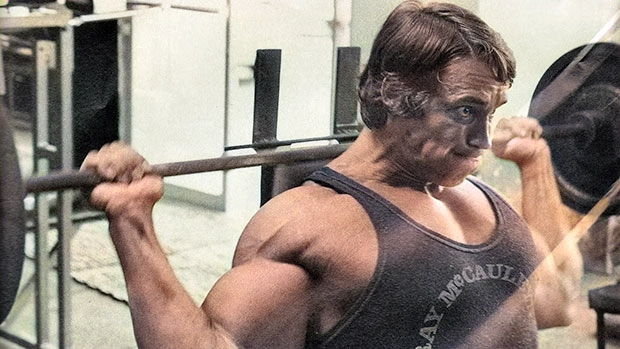
Track your progress. Record your weights and reps. Adjust your routine as needed. Stay motivated and patient. Results take time.
To Wrap It All Up
You’ve now got Arnold’s blueprint for building those iconic boulder shoulders that helped him win 7 Mr. Olympia titles. Studies show that the deltoids can handle up to 20 sets per week for best growth, twice what most muscle groups require.
By following these proven techniques and maintaining Arnold’s famous intensity, you’ll be well on your way to developing those show-stopping shoulders you’ve always wanted.
FAQs
What Is the Arnold Schwarzenegger Shoulder Workout?
The Arnold Schwarzenegger shoulder workout includes overhead presses, Arnold presses, lateral raises, upright rows, and rear delt flyes. It emphasizes all three deltoid heads—front, side, and rear—using high volume and strict form. Supersets and varied angles build size, symmetry, and shoulder definition.
Why Is the Arnold Press So Effective?
The Arnold press is effective because it targets all three deltoid heads in one motion. The rotating movement activates the front delts during the lift and the side delts during the press. This continuous tension and extended range of motion enhance muscle recruitment and shoulder growth.
Can Beginners Do the Arnold Shoulder Workout?
Beginners can do a simplified version of the Arnold shoulder workout. The original routine is intense and includes advanced movements like Arnold presses and upright rows. Start with basic overhead presses and lateral raises, focus on form, and gradually increase volume for safe shoulder development.
Is the Arnold Shoulder Workout Good for Building Mass?
The Arnold shoulder workout is highly effective for building mass. It combines compound and isolation movements to target all three deltoid heads with high volume and intensity. Exercises like Arnold presses, lateral raises, and upright rows promote size, symmetry, and full shoulder development.
Is the Arnold Press Better Than the Military Press?
The main difference between the Arnold press and the military press is range of motion and muscle activation. The Arnold press targets all three deltoid heads due to its rotating motion, while the military press mainly hits the front delts. The Arnold press offers greater shoulder engagement and hypertrophy potential.

